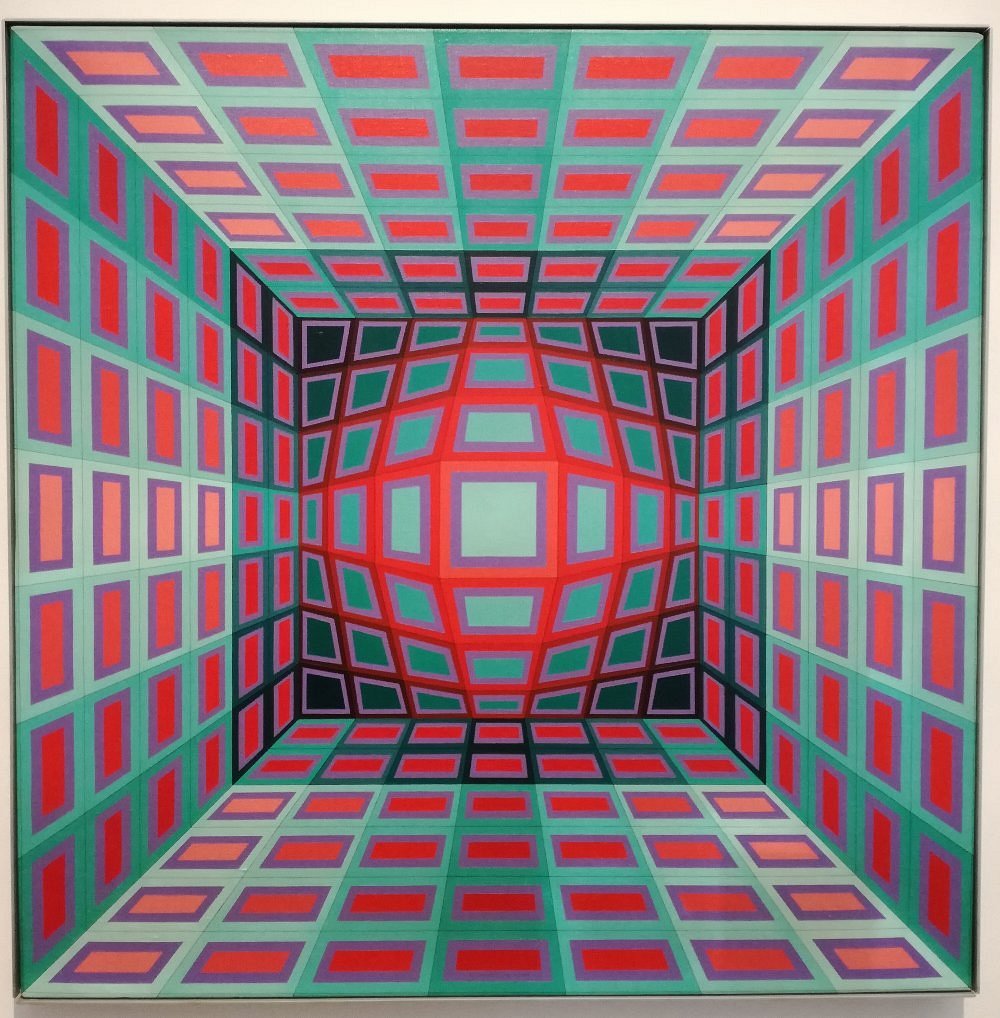Dive into Optical Illusions: Vasarely Museum in Budapest
Nestled in the scenic enclave of Óbuda, against the backdrop of the Buda Hills in Budapest, the Vasarely Museum stands as a testament to the genius of Victor Vasarely, the father of op art. This treasure trove, housed in the historic Zichy Mansion, beckons art lovers to journey through a world where geometry intertwines with illusion.
A Brief Biography of Victor Vasarely
Victor Vasarely, originally Vásárhelyi Győző, was born in 1906 in Pécs, Hungary. While he initially embarked on a career in medicine, the magnetic pull of art proved irresistible. By 1930, Paris became his canvas, where he began dabbling with abstract art, drawing inspiration from avant-garde movements like Constructivism and Bauhaus. As Vasarely matured, so did his signature style, marked by exact lines crisscrossing a kaleidoscope of colors.
In a dance between geometry and optical illusions, Vasarely crafted pieces that tantalized viewers, achieving a visual dynamism that was both novel and enigmatic.
Op Art’s Genesis
It was under Vasarely’s inventive hands that op art – a genre exploring optical illusions via shapes, hues, and perspectives – was born. This movement sought to captivate the audience, urging them to oscillate between the tangible and the intangible.
Inside the Vasarely Museum
Step into the Vasarely Museum, and you’re immediately enveloped by a collection spanning across rooms, charting Vasarely’s metamorphosis from abstract experimentations to op art magnificence. As you stroll through, each artwork invites you to an intricate ballet of colors and shapes, promising motion, depth, and delightful optical deceit.
Museum Masterpieces
While every artwork in the Vasarely Museum is a testament to the artist’s brilliance, certain pieces demand undivided attention:
1. Ibadan-Pos (1977): A monochromatic marvel, this artwork toys with depth, appearing almost three-dimensional from specific vantage points.
2. Keek (1980): A riot of colors, Keek encapsulates Vasarely’s genius of creating visual tremors through color juxtapositions and patterns.
3. Zebra L16 (1964): Merging geometric finesse with the raw allure of animal motifs, this artwork showcases Vasarely’s prowess in molding illusions through geometrical configurations.
4. Vega Naja II (1956): This piece is a beautiful amalgamation of Vasarely’s budding interest in abstract forms and a prelude to his imminent innovations in op art.
Conclusion
The Vasarely Museum in Budapest is more than just a museum; it’s a portal into the mind of a visionary. For those with an ardor for art or the simply curious, Vasarely’s optical art odyssey promises an encounter with beauty, innovation, and imagination. So, the next time you’re in Budapest, let yourself be spellbound by the enigmatic world of Victor Vasarely.


